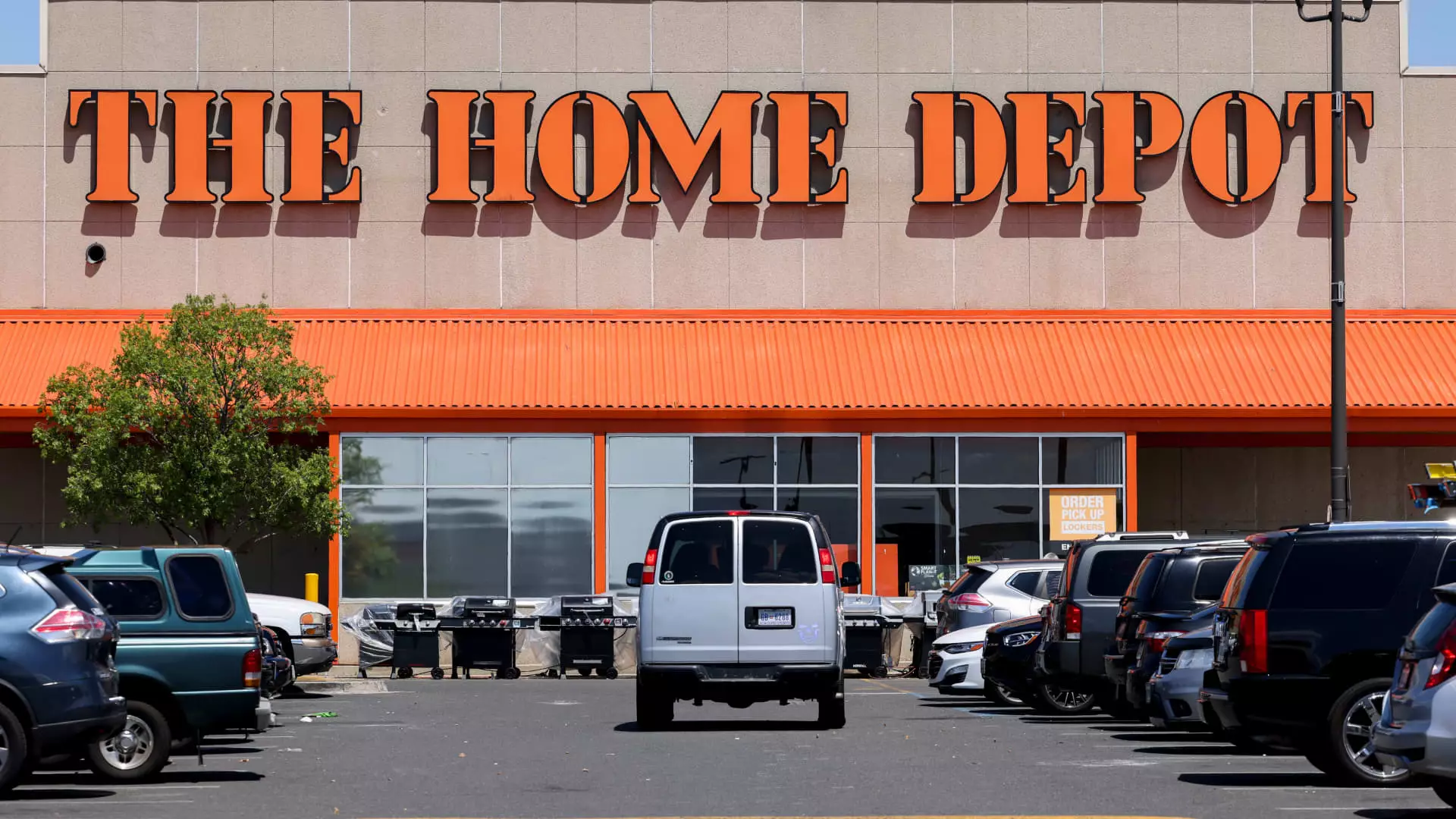As the calendar flipped to 2024, Home Depot faced a complex environment characterized by elevated interest rates and a cautious consumer sentiment. Initially, this led to subdued performance, especially in large-scale home improvement projects—critical revenue drivers for the retail giant. However, as the year progressed, signs of recovery emerged, planting seeds of optimism for what lies ahead in 2025. The dichotomy of 2024 for Home Depot’s stock performance—ups and downs—highlights not just the challenges faced but also the resilience that the company is showcasing as it prepares for a rebound.
In the early months, high borrowing costs deterred potential homeowners and investors from committing to major renovations or purchasing new homes. As borrowing costs remained high, skepticism loomed over big-ticket items traditionally associated with Home Depot. However, a turning point materialized in March when expectations coalesced around possible Federal Reserve interventions to lower interest rates. This shift sparked renewed investor interest, propelling Home Depot’s stock upward. Nonetheless, the optimism was tempered as investor expectations recalibrated, leading to fluctuations throughout the summer and early fall.
Mid-September became a watershed moment for Home Depot when the Federal Reserve decided to initiate a significant monetary easing cycle, slashing rates by 50 basis points. This decision illuminated the path forward for the housing market, which had suffered severely, reaching a 30-year low in housing turnover earlier in the year. The subsequent rise in Home Depot’s shares, culminating in an all-time intraday peak near $440 in late November, laid the groundwork for optimism despite a subsequent pullback of over 11%.
Interestingly, through this tumultuous segment of the year, the S&P 500 index exhibited relative stability. Yet, among the broader market, Home Depot distinguished itself as a preferred holding, even securing a place on Jim Cramer’s list of core stocks. The strategic positioning taken by Cramer’s charitable trust in early September underscored a belief that decreasing mortgage rates would invigorate the housing sector—a forecast still in play as the year draws to a close.
As Home Depot pivots into 2025, the outlook appears increasingly favorable. Early signs indicate that the company’s business may have bottomed, potentially setting the stage for a positive inflection point. Observations from the third quarter results, released in mid-November, amplified these sentiments. With expectations of continued declines in mortgage rates, housing turnover is projected to rise, further stimulating demand for home improvement projects—an act critical to Home Depot’s core offering.
Analysts anticipate an additional two rate cuts in 2025, extending the Fed’s dovish positioning. Given the stagnation in new home construction, older homes on the market will likely require upgrades and repairs, therefore compelling shoppers and contractors alike to Home Depot’s doors for their renovation needs. Importantly, this trend positions Home Depot favorably compared to its competitors, such as Lowe’s, with the former maintaining a stronger exposure to the contractor segment.
In a tactical move to amplify its appeal among professionals, Home Depot recently acquired SRS Distribution, thereby expanding its footprint in the market of roofing and building supplies. This strategic initiative is expected to further differentiate Home Depot as the go-to resource for professional contractors seeking reliable sources of materials.
The crux of Home Depot’s potential recovery lies significantly in the trajectory of mortgage rates. Analysts advocate for a crucial threshold: if rates dip below the 6% mark, comparable sales figures should bounce back into positive territory before too long. In this realm, historical data supports the notion that home improvement stocks bounce back as rates decrease—an optimal situation for Home Depot’s earnings growth.
However, caution persists surrounding the long-term stability of bond yields. The tighter correlation between bond yields and mortgage rates accentuates the risk facing Home Depot’s growth revival. Rising yields could complicate the anticipated rebound, potentially stymying the consumer enthusiasm necessary for sustained improvement in home projects.
While tariff implications relating to the company’s sourcing from Mexico, Canada, and China could pose risks, Home Depot’s robust domestic sourcing of over 50% of its portfolio provides an essential cushion against these uncertainties.
In summation, Home Depot’s trajectory through the highs and lows of 2024 has positioned it for an intriguing 2025. With market dynamics shifting favorably and an increased desire for home improvements likely spurred by favorable mortgage conditions, the retail giant is on the verge of a significant recovery phase. Given the backdrop of consumer demand, strategic initiatives, and a favorable macroeconomic environment, Home Depot remains a stock to watch closely as it gears up for a resurgence in the new year.

